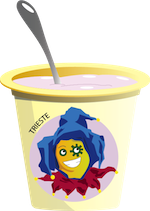Team:Trieste/notebook3
From 2012.igem.org
Week 3
More
Suicide System
We inoculated the positive colonies (RBS_B0034-LL37-TT_B0015) and also checked by digestion. The construct was successfully cloned downstream the inducible promoter T5LacOperator (BBa_K875002). The M15 cells (containing the pREP4 plasmid coding for the Lac repressor) were transformed with the construct described above and seeded in Kan (M15 resistance), Cm (pSB1C3 resistance) in two conditions: with and without IPTG ( the inhibitors of the repressor Lac). Unfortunately the LL-37 cathelicidin was probably unable to disrupt the cell membrane, as we observed a growth both in induced and not induced culture.Antibody
We started testing our antibody! First, we induced the expression of SIP 54.6 with IPTG (1mM) and we verified its production. We collected and lysated induced recombinant bacterial culture. After an appropriate treatment, we revolved the samples in SDS-PAGE and then we identified our protein by Western blotting. The results showed that the SIP 54.6 is present in bacterial lysates but not in surnatans. This proves that the SIP is being expressed, but not secreted.Cumate-Switch Regulation
CymRFor the extraction of the RBS - CymR - SV5 tag fragment from the plasmid we performed two enzymatic cuts in succession, because the plasmid which contains our sequence has two EcoRI restriction sites.
The first one:
- CymR with EcoRI / SpeI.
The second one:
- CymR again with EcoRI
After the purification of the sample, we ligated the RBS - CymR - SV5 tag upstream the biobrick B0015. Unfortunately we didn’t obtain any positive clone.
T5 PROMOTER - CUMATE OPERATOR
For the extraction of T5 promoter - Cumate operator fragment from the plasmid we performed two enzymatic cuts in succession, because the plasmid which contains our sequence has two EcoRI restriction sites.
The first one:
- T5 promoter with EcoRI / PstI.
The second one:
- T5 promoter again with EcoRI
After the purification of the sample, we ligated the T5 promoter into pSB1C3 plasmid. The colonies required two days to grow but we got two positive clones that resulted to be right after sequencing.







 "
"









